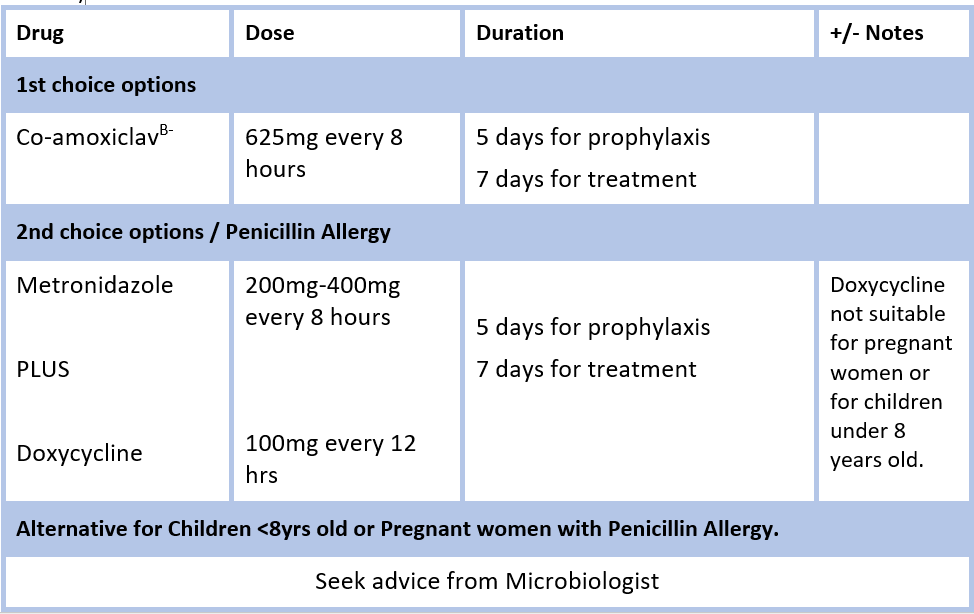Comments from Expert Advisory Committee
- The most common mammalian bites are associated with humans, dogs, and cats and infection is a risk if there is a break in the skin with bleeding.
- Seek specialist advice for bites from a wild or exotic animal (including birds) because the bacteria involved may be different and there may be a risk of other serious non-bacterial infections.
- Human bites are either clenched-fist injuries (‘fight bites’) or occlusal injuries. Most human bites occur on the hand. Human bites are known to be at risk of infection and subsequent complications with an infection rate ranging from 10-50%. Injuries to the clenched fist can be particularly serious.
- Dogs can cause significant crush injury and tissue devitalisation, in addition to laceration, puncture, and avulsion (tearing away of tissue) injury. An estimated 3% to 18% of dog bites become infected (median time to infection is 24 hours).
- Cats have weaker biting force than dogs however they have thin, sharp teeth; 85% of cat bite wounds are puncture wounds, which inoculate organisms deep into the tissue. Due to the high rate of puncture wounds, infection rates after cat bites may be as high as 50% (median time to infection is 12 hours).
General Management Advice:
- Management will depend on how recent the injury was inflicted.
- Removal of any foreign bodies if applicable.
- The affected skin surface should be cleaned, and the unclosed wound copiously irrigated with warm running water, normal saline, or lactated Ringer's solution (with an 18- or 19-gauge needle or catheter tip and large syringe).
- Assess tetanus and rabies risk (relevant travel or bat bite ).
- Assess HIV/ hepatitis B & C risk (relevant to human bite).
- Wound closure is a controversial issue. There is general agreement that infected wounds, and those seen more than 24 hours after the bite, should be left open.
- Consider referral to secondary care for facial injuries (except minor) or penetrating wounds involving underlying structures (joints, nerves, muscles, tendons, bones). Note: penetrating bites to the hands, feet or head are at particular risk of infection and complications.
- If the wound is infected, send pus or deep wound swab for culture.
- Antibiotics are recommended for infected bites (treatment) and, in certain circumstances, non-infected bites as prophylaxis.
Antibiotic prophylaxis is appropriate for:
- All human bites less than 3 days old, all cat bites less than 2 days old and other animal bites less than 2 days old to the hand, foot, face or genitals; puncture or crush wounds; wounds that require surgical debridement or involving joints, tendons, ligaments or fractures.
- Wounds that have undergone primary closure.
- People at risk of serious wound infection (e.g. those who are immunocompromised, diabetic, asplenic, cirrhotic).
- People with a prosthetic valve or prosthetic joint.
Treatment
See guidance on dosing in children for quick reference dosage/weight guide.

Patient Information
- If the bite wound is not infected- advise the person to check for signs of infection and if these develop to attend urgently for review.
- If the wound is infected- Advise the person to attend urgently for review if the infection worsens or if they feel increasingly unwell
Merged Page September 2020
(formerly separate Human and Animal bite pages)